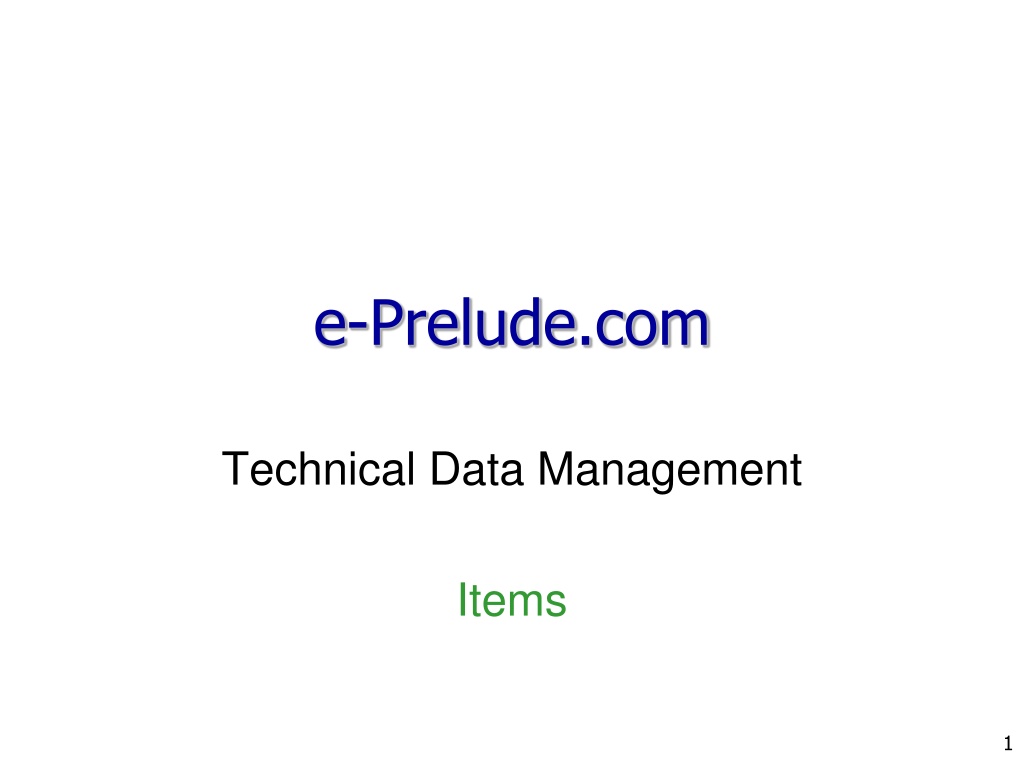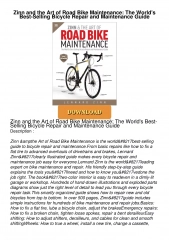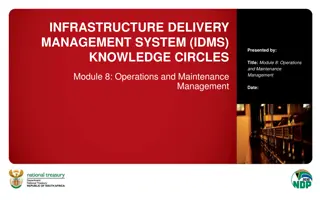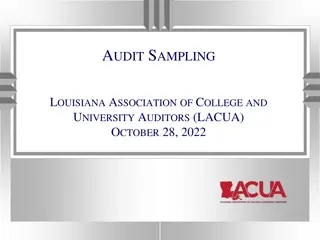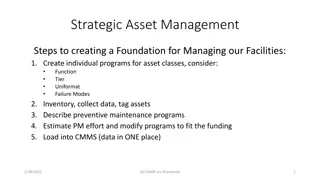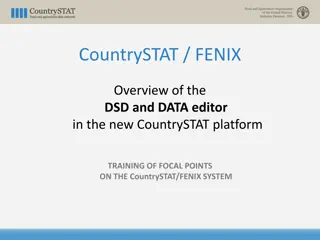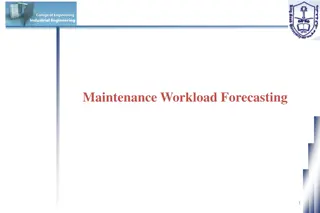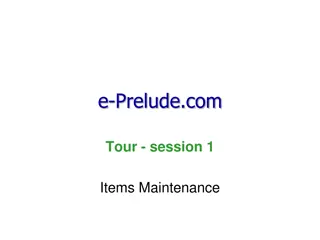Effective Item Management Practices for Data Codification and Maintenance
Explore the importance of recording various items in technical data management, including finished goods, raw materials, sub-assemblies, and more. Learn about different codification methods and maintenance practices to enhance item identification and management efficiency.
Uploaded on Sep 30, 2024 | 0 Views
Download Presentation

Please find below an Image/Link to download the presentation.
The content on the website is provided AS IS for your information and personal use only. It may not be sold, licensed, or shared on other websites without obtaining consent from the author. Download presentation by click this link. If you encounter any issues during the download, it is possible that the publisher has removed the file from their server.
E N D
Presentation Transcript
e-Prelude.com Technical Data Management Items 1
Item Management Content Codification Item attributes Stock unit of measure and purchasing unit of measure Phantom Items Non stocked items 2
Which Items should be recorded? Finished goods Sub-assembly or intermediate products Manufactured or sub-contracted Purchased goods Raw materials et components Trade goods Purchased and sold without any transformation Packaging boxes, ... 3
Items involved Purchased goods Raw materials and components Sub-assemblies manufactured or sub-contracted Finished goods Trade goods Purchased and sold Packaging boxes, ... 4
Item codification Mnemonic Codification Advantage: easy to identify the item Disadvantage: required to create long, complex and difficult to maintain codes Often involves alpha codes Example SWHC0530 (wood screw, countersunk head, diameter 5 mm, length 30 mm) 5
Item codification Arbitrary Codification (numeric) Advantage: short codes, easy to enter, no classification problem Disadvantage: requires to keep lists to find the item Example 31822045 6
Item codification Mnemonic Root (family, nature or category) + a chronological sequence Advantage: it is easy to identify the item nature Example T FFF nnnn Type Family Sequence Number Examples of types: 1 : Raw materials, 2 : Purchased components, 3 : Consumables 4 : Sub-contracted items, 5 : Manufactured items, 6 : Phantom items, ... 7
Item Maintenance Additionnal Information fields 8
Item Attribute Tables Engineering Menu Item Status Unit of measure Item Category Item Nature ABC Class Planner Logistics Menu Inventory Status Warehouse 9
Attribute Table Maintenance Select the table to update : Enter the code then the description. Validate with OK Note: Accounting information are entered in the Item Category Table 10
Item status Characterize item during its life cycle Activated Prototype Pre-serie Accepted Serie Fin de vie Obsolete Desactiv. Each status can correspond to a number of locks Life stages are reversible Some life stages can be skipped Item status are not managed by e-Prelude 11
Units of measure The unit of measurement describes the unit in which the item is managed within the company examples: part, pound, meter, We also specify the number of decimals in the stock management according to the desired precision 0 : 25 kg 3 : 1.253 kg 12
Warehouses Access: Logistics Menu, Warehouse Table Maintenance Option Physical Warehouses Geographical locations in which items can be stored examples: RM: Raw material warehouse SF: Semi-finished products warehouse FG: Finished goods warehouse Inventory reports per warehouse 13
Warehouse available for MRP or not Indicates the warehouse capacity Specifies if the inventories in this warehouse can be taken into account by the MRP function 14
Item categories and natures Categories Grouping of items by commercial families linked to general ledger Natures Grouping on physical or technical characteristics ex: plastic parts, screws... 15
ABC classes Characterize the economic importance of each item Classification according to consumption value Relations to Reorder Policy 16
Planners / Buyers Agent in charge of managing the supply of the item Purchased Item: it is the buyer Manufactured Item: it is the planner Specific reports per buyer / planner 17
Inventory status The notion of inventory status is described in the Inventory Management presentation For each item, it is the default status for inventory transactions example: a purchased item has to be inspected before it can be used by the workshop -> default status : INSP 18
Item weight Item weight in its unit of measure Allows to plan packaging and transportation Automatic calculation of the weight of a parent item with the weight of its components by the cost roll-up function 19
Item Volume The item volume is described as the number of units which can be stored on a pallet Allows to calculate The volume of flows of goods (in number of pallets to ship and to receive) The warehouse capacity utilization 20
Stocking unit and purchasing unit The unit in which a product is purchased may be different from the unit in which the product is managed internally example: 10 m sheet strips are purchased and managed in meters We specify a conversion coefficient between units (ex: 10) Different suppliers of the same item may have different purchasing units 21
Stock unit and purchasing unit Stock unit of measure (item window) Purchasing unit and conversion coefficient 22
Packaging This is the vendor's multiple sales unit example: Pallets of 8 drums We will have to order a multiple of the packaging quantity 23
Phantom Items Allows to structure the BOMs Allows to create common BOMs Can not give rise to work orders and cannot be stored Are "transparent" in the requirements calculation procedure They will be treated in the slideshow on the BOM management 24
Non-stocked Items Articles which cannot be physically stored Do not have BOM or manufacturing routing Can be used in BOMs to indicate material or intangible elements used in the item valuation examples: oil, rags, paper, screws Can also be used to invoice services or labor Hours of maintenance Packaging Not to be confused with the Item reorder policy "Not managed" 25
Item Management Parameters Will be described in the presentation about production planning 26
